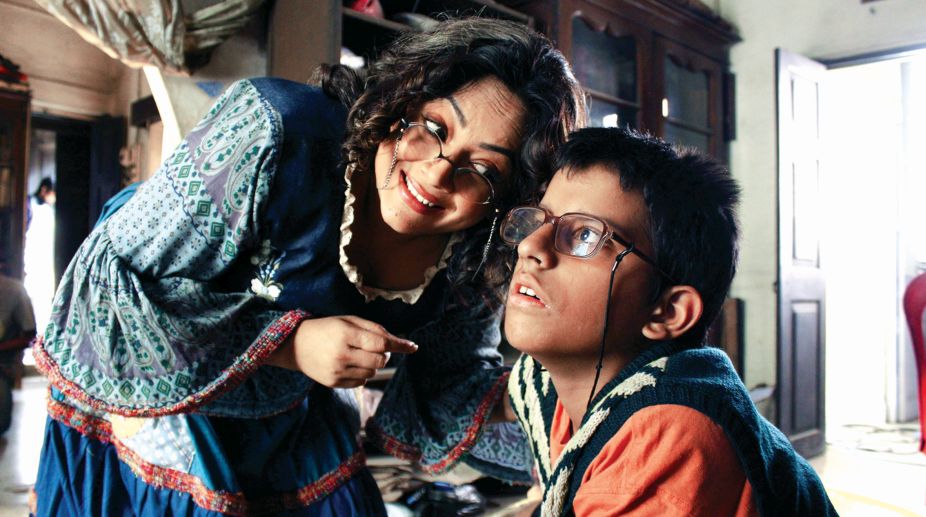Prosenjit Chatterjee takes on Kolkata’s dark underworld in ‘Khakee: The Bengal Chapter’
The upcoming season of Khakee shifts its focus to Kolkata in the early 2000s, where the city was plagued by gang wars and political power struggles.

Sreelekha Mitra and Mahabrata Sen in a still from Rainbow Jelly
After a disastrous experience in 2017, there was some hope of a revival for Bengali cinema in 2018. If the first five months are any indication, the hopes have been, to some extent, belied when just a handful of films have made the grade.
Somewhat ironically, this is the month that has brought a few bright spots through Haami, Drishtikone and Guptadhoner Sandhane. They have done reasonably well though only a few would be inclined to put them at a level of artistic excellence.
Advertisement
All that they have proved is that the audience has continued to have faith in the work of Shibaprasad Mukherjee and Nandita Ray, on one hand, and Kaushik Ganguly, on the other. That is a good enough sign given the uncertainties which have persisted despite the numbers that suggest quite dubiously that all is well on the production circuit.
Advertisement
What is encouraging is that a new generation of directors has emerged with a steady flow of new ideas. Not many have succeeded as much as Anindya Chattopadhyay in Open Tee Bioscope or Aditya Bikram Sengupta in Aasha Jaowar Majhe. But they have been unrelenting in their efforts.
This is what explains a film like Rainbow Jelly. Soukarya Ghosal is new and one would have expected him to play safe. Instead, he has moved into the challenging world of fantasy with light touches that confirm an inclination to explore a language of his own. What happens to the film is less important than the fact that the effort has been made with a child actor as the protagonist. It is an encouraging sign that more films are being made with child actors.
Sahaj Pather Gappo was a minor sensation with two children who became the instrument of rural exploration that revealed a rare kind of cinematic consciousness. Rainbow Jelly, on the other hand, has been presented as food fantasy that takes one back to the charming innocence of one’s childhood.
The narrative and its cinematic treatment have weak spots but one must appreciate the courage of a young filmmaker who has chosen a subject that doesn’t have a ready market.
Haami also concentrated on children but the directors had their own methods of generating a popular appeal. In both cases, ideas were developed by the directors themselves.
Haami was presented as a sequel to Ramdhanu, which dwelt on the painful realities of parents striving to get admission for their children in the schools of their choice. While the original had a ring of truth and brought both success and satisfaction, the sequel was a contrived package concealed by colourful treatment.
What all this means is that there is a desperate search for new subjects. This would not have been a bad sign had it not been for the fact that many of the new ideas have failed to click. It is a different matter with a director like Kaushik Ganguly who has revealed a relentless flair for new ideas.
One awaits Nagarkirtan, which had fetched Riddhi Sen the best actor award. But he has found a quality audience, which was confirmed when Bisarjan was premiered on television and found lovers of good cinema remaining in their drawing rooms to watch the film all over again.
The same applies to Atanu Ghosh’s Mayurakshi, which was seen for the first time on a movie channel. It looked as if the director’s experience on the small screen had come full circle. It was on television that he had developed his skills for exploring new ideas that now constitute the most outstanding feature of his work.
These two films made by directors who have now quite conspicuously moved into the area of excellence — except when popular concessions have to be made in Drishtikone — along with the potential evident in Rainbow Jelly would suggest that Bengal now relies more on content-driven projects.
It is difficult to talk about “stars” when Dev has begun to explore new territories for himself — from a jungle adventure like Amazon Obhijan to a romantic drama in the sky in Cockpit while Prasenjit manages to do everything from endorsing a string of off-beat subjects (with himself in the lead) to grabbing opportunities to revive the partnership with Rituparna Sengupta and shining in the reflected glory of Kishore Kumar in a future project. While the established names have become more liberal in their choice of subjects, audiences can look forward to a wider range of new ideas.
Interestingly, this has thrown up the possibility of more fresh faces than ever before. The experience of Nagarkirtan would confirm that the handling of both the subject and the actors matters more than the non-existent stardom.
Of course the detective genre has its perennial appeal but Guptadhaner Sandhane would confirm that the confidence placed in Arjun Chakraborty has yielded the desired results. The flood of films has also brought new faces but it is easy to identify work that is hopelessly amateurish and best ignored.
Cinematic sensibilities are unmistakable even in films that may not have done well in the theatres. Atanu Ghosh is an outstanding example of a director who took time to create an unconventional world of artistic experiences. He could show the way to others who have both the promise and patience to find the right audience.
Advertisement